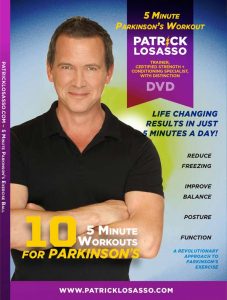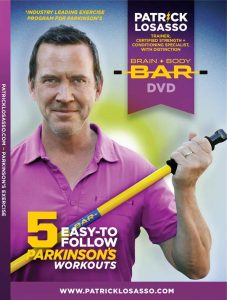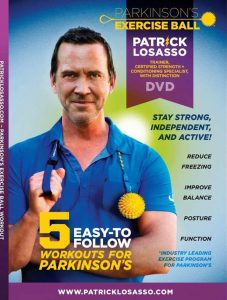Generally associated with training by athletes who want to perform at their highest level, agility drills are a key strategy employed when improving an individual’s ability to change direction while in motion. These drills focus on the lower torso joints (from the hip to the ankle) and are a core part of the rehabilitation process undertaken to establish better control of bodily function.
These drills can greatly enhance joint proprioception and provide stability in movement, especially when altering the course of direction. These drills have proven to be a very effective way of avoiding falls due to the enhancement of motor functionality they establish.
Some Benefits of Agility Drills
Greater control during movement
The whole purpose of agility drills is to provide a greater control of the body when it is in motion and condition a person’s immunity to accidental falls due to a weak control of motor functions.
The exercises done all exert pressure on the lower extremities and help with the recovery of the hip, knee, and ankle joints. Once such stability is established, the person can navigate day to day movements and activities with relative ease and avoid injuries related to the need for physiotherapy in the first place.
Better response time
Agility drills are most beneficial when undertaken to enhance response during moments of split second locomotive decisions. Athletes aren’t the only ones who require that extra advantage of having a slight moment of clarity that lets people make a conscious decision about the course of action they wish to take in order to respond to that particular situation.
Agility drills condition the lower extremity of a person’s body to have a more stable stance standing on the ground, and therefore the muscle memory assists in avoiding unnecessary falls.
Delays motor disability in Parkinson’s disease patients
Patients with Parkinson’s gradually begin to lose control of their motor functions and can suffer tremendous amounts of pain because of the deterioration caused by the degenerative disease. The symptoms may start out as slight tremors but can go on to complete loss of balance that results in injuries. People with PD generally don’t seek the help of physiotherapists, trainers or PTs until well after the pain starts and they experience delays in motor functions.
Agility drills help to delay mobility disability in such patients by addressing and improving movement initiation and slowness.
Agility Drills Coupled with Visual Prompts
To pair agility drills with visual prompts or situations of every day obstacles is a technique designed to make the entire process easier and more effective. It has been determined that athletes can practice agility drills until they drop, but this motor reflex will not translate into the field of play unless it is practiced with a triggering visual cue.
Visual aids help with establishing a position to gain momentum and balance during the exercise process. Coupled together, they both create the perfect routine to hone reflexes and provide stability.
Studies conducted on people with knee osteoarthritis and PD have shown that there is a marked difference in the muscle control, flexibility, and overall quality of life in those people who have undertaken agility drills as the rehabilitation method of choice. One of the studies conducted by LA King to see whether using a sensorimotor agility exercise program could help delay the mobility disability in patients with PD showed promising results.
Visual Prompts
·Straight Line Visual Cues
Example: Tape, paint, scales
By using a straight line that acts as a visual aid during crossover drills, the patient can find themselves increasing their sense of balance and coordination. A straight line acts as a grounding point, telling and reminding them where exactly to keep their feet at during the entire process. This helps provide focus and a general idea of resourcefulness for people recovering, helping them with even their confidence as by applying the training method in the real world, they can use whatever they prefer as a navigational guide and aide for accurate mobility.
Cone Cues
Example: Traffic cones
By placing a few traffic cones (or indeed any similar object) in a line about 5 yards each and creating a pattern to navigate for the exercise, the factors of speed and accuracy are enhanced. People who find it difficult o navigate because of joint pains and gradual loss of control can find such methods and visual guidance aid to be very beneficial for rehabilitation.
They may also find such visual prompts reminiscent of the real world they navigate, dodging people and objects on a crowded street. Practice in this regard will prepare the people with injuries or minor disabilities with the navigational skills needed in everyday life.
Illuminating Lighted Prompts
Example: Laser lights, Power Point laser pointers
One of the more useful visual prompts are the ones that target and cue the central nervous system to respond to an interfering object. Unplanned protective movement increases the anticipatory response required when an individual experiences a presenting obstacle in the real world. This has been hypothesized to be a quality stronger in those who have better peripheral vision as opposed to those with slower eye movements.
By using laser light points or other such colored lights to train the eyes to perceive faster, the anticipation skills are also enhanced, thereby giving people the chance to avoid collision or other accidents.
Stair climbing
75% of the injuries sustained through falls happen at home. Most of these falls take place on the stairs, and for people undergoing physical therapy, a task such as climbing up or down the stairs can be an excruciating one. Climbing down stairs can actually be more challenging.
Climbing down the stairs helps the knee joint regain stability through the positive stress exerted on it, and climbing both ways exerts necessary pressure on the body’s lower extremities to assist muscle redevelopment. This exercise is the most hands on real life simulation accessible and pragmatic enough to do on a daily basis.
Make sure your exercise program contains an agility component that involves coordinated movement prompted by visual cues. This will maximize the benefit of your program.
Got Parkinson’s? Feel Better with Patrick’s Exercise Programs!
Quick & effective
The 5 minute DVD
Parkinson’s Exercise DVD – $29.50
You can improve your health and vitality in the comfort of your home in little as 5 minutes a day.
Learn more/Purchase
Greater intensity
The Parkinson’s Brain&Body Bar
The Brain&Body Bar – $99.50
A Fun, unique and effective way to build strength and flexibility
Learn more/Purchase
Greater intensity
The Parkinson’s Brain&Body Bar
The Parkinson’s Exercise Ball – $99.50
Used by individuals, therapists and trainers to improve function and health for PWP.
Learn more/Purchase
BUYER COMMENTS
“It used to be that I couldn’t get up from a chair but after using the 5 Minute Workouts, I can get up by myself.” Sara K. Age 72, Manhattan, New York
Sara K.
Age 72, Manhattan, New York
“Thank you Patrick! The DVDs I purchased have made an incredible change in the way I think of my disease and the way I feel. I’m fighting back!”
Leonard P.
Age 68, Manhattan Beach, CA
“This DVD program is fun and I feel so much better. My shoulder used to hurt and I couldn’t raise my right arm. Now I can!”
Nathan W.
Age 69, Rhode Island
“I use my DVD every morning. It makes me feel so much better through the day.” Rhonda B. Age 72, Montreal, Canada
Rhonda B.
Age 72, Montreal, Canada
“I actually went back to the (golf) driving range one month after using the Bar. I got my golf swing back, not quite what it used to be but it was fun!”
Sandy M.
Age 81, Chicago, IL
“I tried other DVD programs but none of them has made me feel as great as I feel now using the BrainBall and the Bar.” Oscar B, Age 56, De Moines, IA
Oscar B,
Age 56, De Moines, IA
“I love the beautiful locations. I t takes me back to wonderful trips my fly fishing. I feel so refreshed even after just 5 minutes.”
Mel R.
Age 91, Montana
“Where I live, there are no trainers that specialize in Parkinson’s. Patrick’s DVDs have given me hope and have definitely improved my health and balance.”
Meagan S.
Age 62, Bakersfield, CA
“I now use the Brain&Body Bar every day. It’s had an amazing effect on my posture, balance and strength. Plus it’s fun!”
Peter R.
Age 76, Chicago, IL
“Just the other day I dropped a heavy lief of a table, it would have crushed my foot but I reacted quickly and moved my body and foot out of the way. I completely believe that I was able to react and move so fast because of Patrick’s exercises.”
Anita W.
Age 81 Los Angeles, CA
“I have been using the Parkinson’s Exercise DVD Program now for three months and I feel so much stronger, confident and balanced. Thanks Patrick!”
Vick F.
Age 78, Los Angeles,








